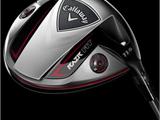In 2012, China's automobile exports took a big step forward. 18671079399
Whether to play it safe or push for progress is a dilemma for China's automobile exports in 2012. With a year-on-year increase of 49.45%, automobile exports contributed to 60.79% of the sales growth in the past year, 2011. During that time when the Chinese auto market was sluggish, automobile exports became a bright spot. Accelerating international market expansion became a survival strategy and solution for many automakers, especially domestic brands. Clearly, after experiencing a low period during the international financial crisis, automobile exports took a big step forward in 2011.
Nowadays, automakers are becoming increasingly eager to export, and joint venture automakers have also started to follow the trend of exporting. It can be foreseen that in 2012, the international auto market will still be a strategic breakthrough for many automakers, and China's international exploration of automobiles is accelerating.
The future is bright, but the road is bound to be winding. The pressure brought by external environments is becoming increasingly prominent. The global economic growth continues to slow down, the European debt crisis is worsening, and the instability of major oil-producing regions such as the Middle East and North Africa may exacerbate the situation due to geopolitical changes, leading to rising oil prices and raw material costs, which could suppress automobile market demand. Meanwhile, factors such as RMB appreciation and intensified Sino-foreign trade frictions make automobile exports more difficult and reduce profits further.
From an internal perspective, although Chinese automobiles have been exported for many years, the old problems of low quality and low price, focusing on quantity over quality, remain unchanged. Especially when the domestic business environment changes, there is a tendency for everyone to jump on the bandwagon without careful consideration. For a while, it seems like not exporting means falling behind. What can an annual export volume of a few dozen vehicles bring? For some companies, apart from a slight increase in sales figures, there is nothing else. If after-sales services cannot be guaranteed, it will leave hidden dangers. In fact, for most car companies, the problem of low export profit margins is like a spell that has troubled them for a long time. If the RMB continues to appreciate in the near future, the already meager export profits will be hard to sustain. What should be done in this situation? Change, only change can help.
Some companies have already taken action or are in the process of doing so. Besides adjusting the product structure for export and increasing product added value and terminal selling prices, they are shifting their focus to changing the export model, gradually transitioning from product output to building factories abroad and implementing integrated production and sales models. The advantage of this model lies in the ability to effectively avoid risks and trade barriers. As the RMB appreciates, its role in reducing costs will become even more prominent. Accelerating the construction of overseas production bases and rooting themselves in local markets were particularly evident in 2011, sparking a "factory-building movement." However, among these efforts, there are those who blindly follow trends, conduct inadequate research, and pursue short-term benefits and "eye-catching" effects. On the bright side, some overseas bases constructed several years ago by certain companies are about to bear fruit.
Challenges and opportunities are both clearly visible. 2012 may still be a year of rapid advancement for China's automobile exports. Therefore, when stability becomes harder to achieve than progress, "seeking change in progress" becomes the urgent task at hand.
The policy direction is already very clear. In the near future, standardizing the qualifications of export enterprises, raising export thresholds, optimizing export structures, strengthening network construction, and improving service quality... all these will become boosters for the continued advancement of China's automobile exports and serve as a "compass" for "seeking change in progress."
Hubei Jiangnan Dongfeng Special Purpose Vehicle Co., Ltd. is a designated producer by the National Development and Reform Commission, the sole qualification holder for fire truck production in the capital of special purpose vehicles approved by the Ministry of Public Security Fire Bureau, and a supporting modification plant of Dongfeng Motor Corporation. The main products produced and sold include fire trucks, tow trucks, aerial work platforms, wing-opening box transport vehicles, water sprinklers, refueling vehicles, chemical liquid transport vehicles, flatbed transport vehicles, mobile power vehicles, garbage trucks, and hundreds of other varieties. All models have been listed in the national announcement directory, obtained ISO9001-2000 quality management system certification, and passed CCC certification.
Phone: 18671079399 0710-3328649 3328629 (fax) Website: http://www.hbjndf.com
E-mail: [email protected]
Fire truck parameters, fire truck prices, fire truck pictures, water sprinkler parameters, water sprinkler prices, water sprinkler pictures, refueling vehicle parameters, refueling vehicle prices, refueling vehicle pictures, tow truck parameters, tow truck prices, tow truck pictures, aerial work platform parameters, aerial work platform prices, aerial work platform pictures, garbage truck parameters, garbage truck prices, garbage truck pictures, refrigerated truck parameters, refrigerated truck prices, refrigerated truck pictures, blasting materials transport vehicle parameters, blasting materials transport vehicle prices, blasting materials transport vehicle pictures, flatbed transport vehicle parameters, flatbed transport vehicle prices, flatbed transport vehicle pictures.



